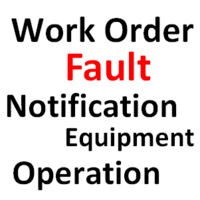 |
| Integrating Map Data with SAP! |
When strategic enterprise mobility expands to include integration with the Internet of Things, entirely new business models and competitive arenas will open up. Can you image a maintenance person entering a plant building and wirelessly surveying all of the equipment located there for repair and maintenance needs? The machines can wirelessly communicate their own needs using wireless embedded chips connected to sensors. All of the equipment could be connected to a command and control center on the other side of the globe!
Companies are recognizing the productivity gains enabled by mobilizing their sales, services, logistics, transportation, warehouses and manufacturing environments. In a word, enterprise mobility has become strategic. More selection and acquisition decisions on mobile platforms, mobile security and mobile applications are being made by CIOs and CEOs today. Why? These enterprise mobility solutions are needed to support mobile apps across numerous departments and processes. No one department or project is able to anticipate the needs and requirements of all others. As a result, management must look across departments and take a more enterprise wide view of their organization's mobility needs.
Today, business leaders are recognizing that the very future of their companies may depend on their ability to effectively make the digital transformation that rests on the foundation of enterprise mobility. If customers are utilizing mobile apps for purchases, then the sales department must be very focused on mobile apps. If mobile marketing is becoming more effective, then the marketing department should quickly become mobility marketing experts. You get my point!
I am very interested in how mobility vendors are addressing CIOs and CEOs in their marketing campaigns in 2013. I haven't see much content focused on business leaders yet. I guess the assumption is that the LOB (line of business) or developers are the ones creating a short list of vendors for the CIO/CEO to review. As a result, webinars and marketing campaigns are still focused on development platforms, development tool kits, implementation challenges, mobile security and speed of implementation solutions. I wonder when this is going to change.
I wonder how a marketing campaign would look if it were targeting business executives. Would it emphasize the ability to increase productivity with B2E apps? Would it suggest more effective marketing campaigns and increased customer loyalty by using compelling B2C apps? Would it focus on maximizing the number of solutions that could all be supported on one platform? Would it emphasize scalability, security and a low total cost of ownership? What do you think?
What about mobile solutions focused on business leaders? Perhaps executive level solutions would show all mobile data flows, mobile security levels, mobile apps, and any solutions yet to be mobilized. Perhaps all ERPs and business solutions should be wrapped by a mobile management solution that shows all data that is accessible by mobile devices, and which is not. Perhaps any performance limitations residing in your logistics of information systems would be automatically exposed so management could determine how to remove bottlenecks and mobilize the system.
If we buy into the the notion that mobility is strategic, and if our legacy systems and enterprise application integration platforms are not supporting real-time mobile device access to mission critical data, then things must change fast.
Consumers' buying habits are changing. They use mobile devices for researching products. They compare prices on mobile devices. They ask their friends for suggestions and recommendations using social networking sites via mobile devices. They schedule their lives on their mobile calendars. They track product shipments on mobile devices. Are businesses understanding this? Are they changing their processes and technology platforms to support these industry trends? If they are not evolving at the same rate their customers are adopting the use of technology, then they are opening up an increasing opportunity for competitors to capture market share by delivering new or improved mobile apps and enhanced mobile experiences.
Business leaders cannot simply play around with mobility and POCs (proof of concepts) today. They must get strategic, and fast.
*************************************************************
Kevin Benedict,
Head Analyst for Social, Mobile, Analytics and Cloud (SMAC)
Cognizant
View Linkedin Profile
Learn about mobile strategies at MobileEnterpriseStrategies.com
Follow me on Twitter @krbenedict
Join the Linkedin Group Strategic Enterprise Mobility
***Full Disclosure: These are my personal opinions. No company is silly enough to claim them. I am a mobility and SMAC analyst, consultant and writer. I work with and have worked with many of the companies mentioned in my articles.





